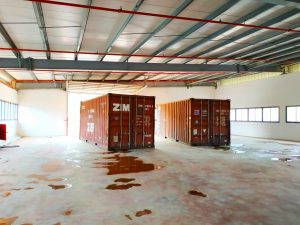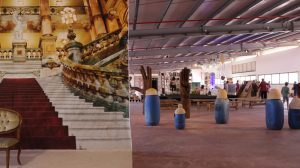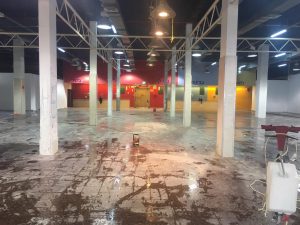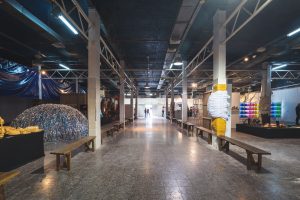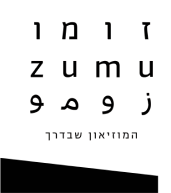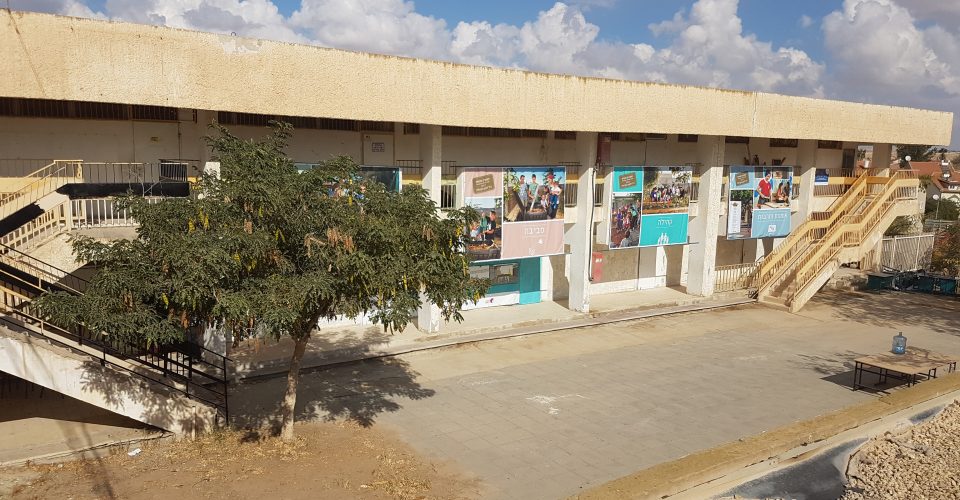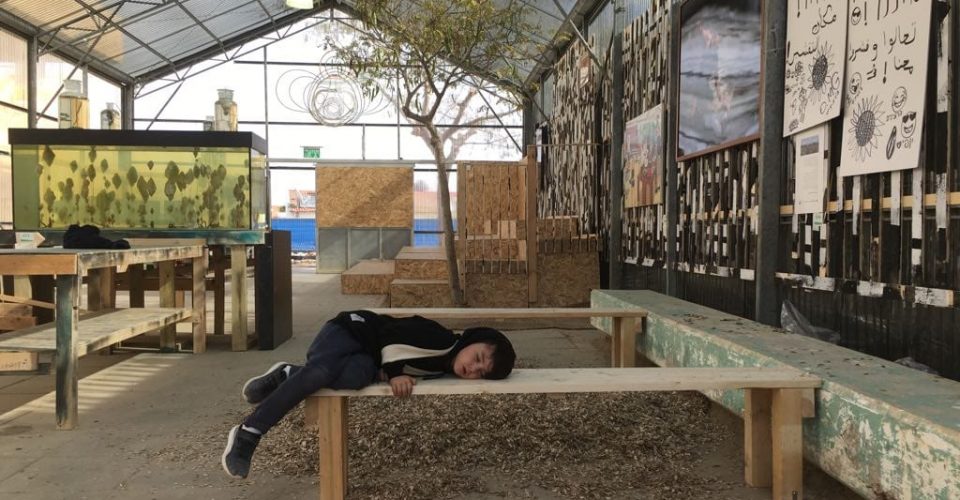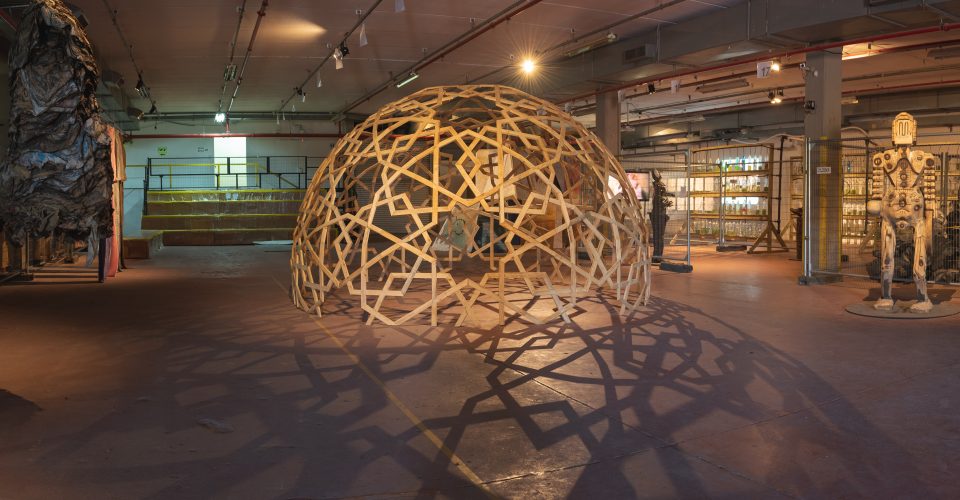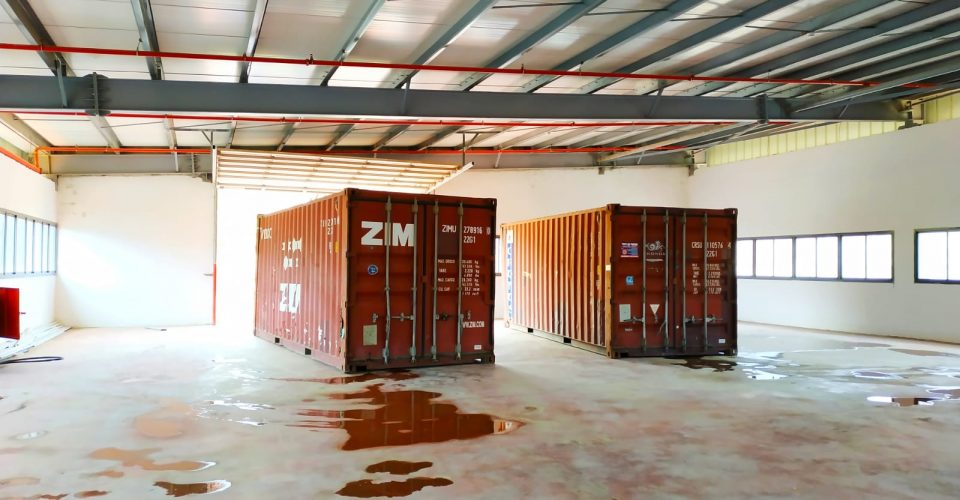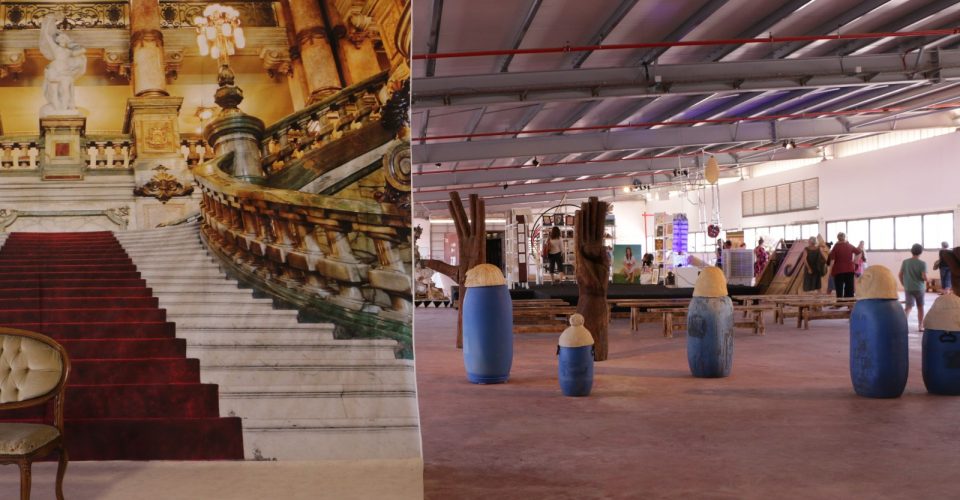The design challenge faced by Zumu in every city it travels to is complex, multifaceted, and exciting. Overnight, we try to create bustling cultural centers and convert, quickly and effectively, quintessentially non-museum spaces (which are usually neglected and/or abandoned) into a dynamic, inviting and compact museum space.
The surrounding reality is an essential element of the museum’s design. Unlike almost every museum in the world, which are built with the specific needs and goals of the museum in mind, we work in existing, unaltered spaces. The second floor of a community college, an abandoned supermarket, a schoolyard or a logistical center in a huge factory.
The donated space, as is, is handed over to Zumu’s artistic director and head designer, Shay Id Alony, and he crafts the museum out of the artistic, design and communal ideas that make Zumu what it is.
Just like home
In all Zumu stops, we greet guests in a reception area that contains information about the museum and the exhibitions, hand out detailed catalogs in different languages and serve hot tea and cookies to all the visitors—because, at Zumu, we believe everyone should feel at home.
Next to the reception desk, Shay Id Alony carves out an expansive, inviting space for a creative workshop, in which the many school children and their families visiting the museum, create their own artworks, which derive from the exhibition’s host city.
Likewise, deep within the exhibition, which is in the middle of the museum, Shay Id Alony arranges benches and seating areas for visitors to sit, take some time out, speak and share ideas. We believe that the most important part of Zumu in general, and the museum space, in particular, are the conversation benches on which we invite all of Israel’s communities to start a new, meaningful conversation.
A Space that Creates Magic
For our pilot project, Zumu Yeruham, we set up the museum in the abandoned Shoshana Yaacov schoolyard, in a huge, semi-transparent hothouse that became the central museum space. We converted some of the schoolrooms into areas for video screenings, creative workshops, and the yard housed the Books in a Deep River installation by Avital Geva and the Ha’asif (harvest) container.
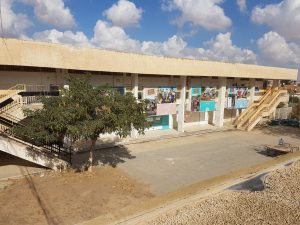
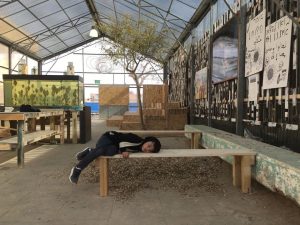
For Zumu Arad, we were given a space four times as big, and we set up shop in the logistical center of the Arad Towel Factory, which was full of boxes of towels and bathrobes manufactured in Jordan, shipped to Arad, and then sent all over Israel and the world. In Zumu Arad, which dealt with production systems and systems that control our lives, Shay Id Alony chose to leave sections of the factory exposed to visitors and to cover the exhibition space with a large net, which blocked access to the crates and warehouses, but left the main structure open, which is where we staged the exhibition that could be seen by everyone
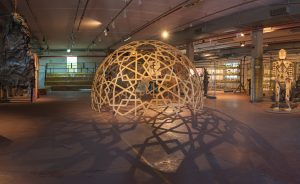
For Zumu Hatzor HaGlilit, we chose a huge hangar on the second floor of the MBC College as our venue. A low-ceilinged space filled with windows. In this so-not-a-museum space, Shay Id Alony evoked the cyclicality and rhythm of a ceremony by creating a circular space surrounded by concentric circles. Instead of massive video screenings, which was made impossible by the light flooding in from outside, televisions were placed on the floor in a viewing area, in which children could lie on mats and watch video works.
